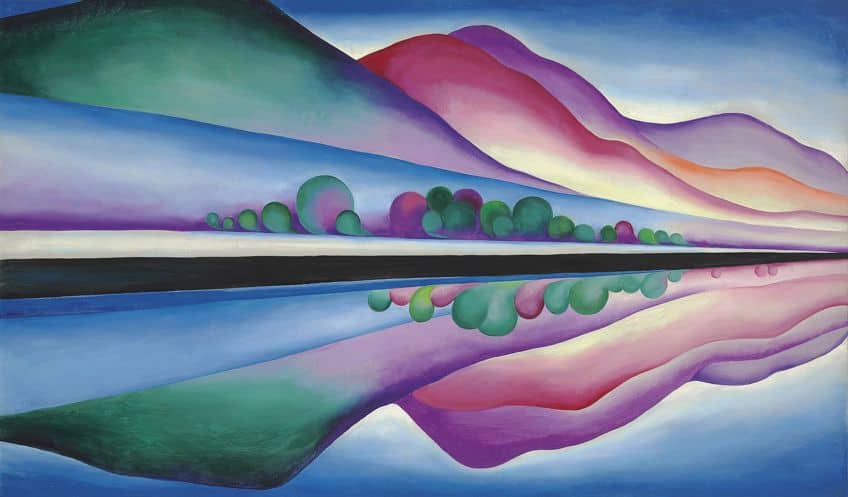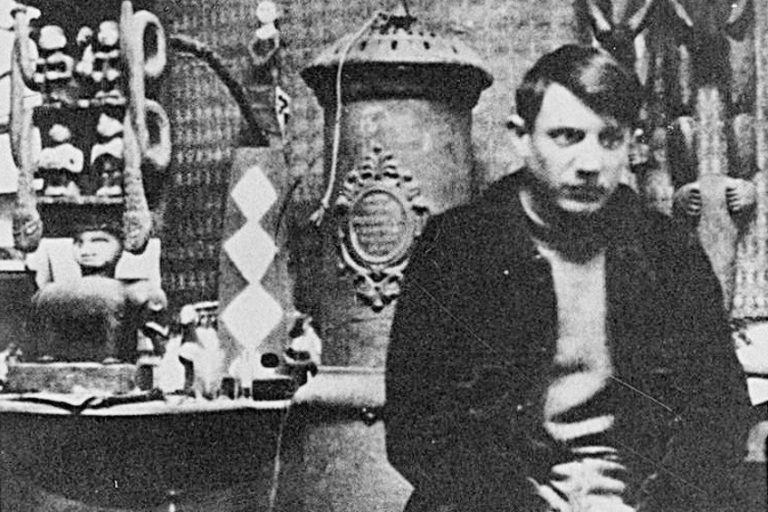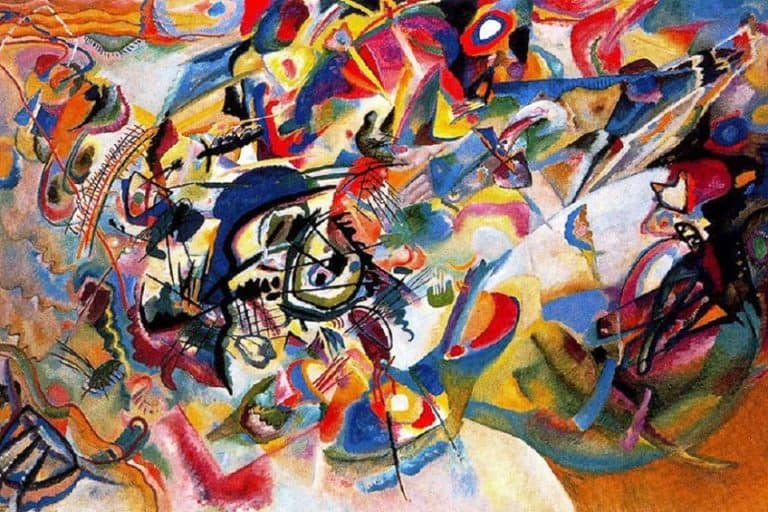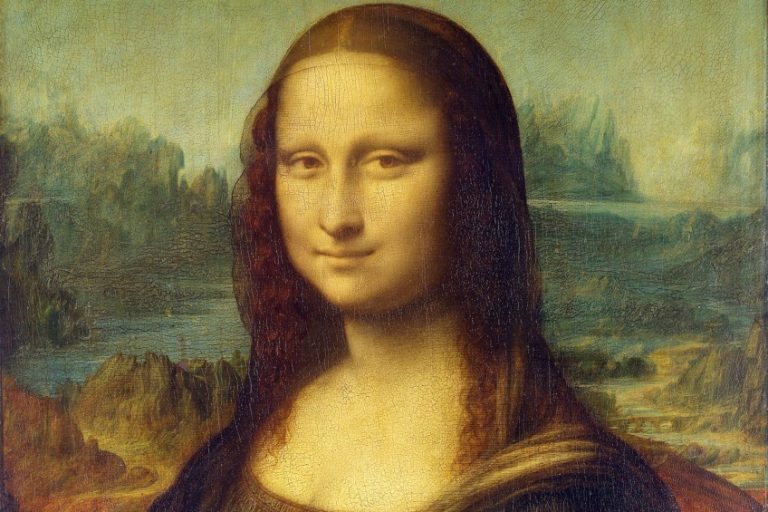“Lake George Reflection” by Georgia O’Keeffe – A Painting Analysis
Welcome to the serene shores of Lake George, where Georgia O’Keeffe’s masterful strokes transform water into poetry. In her captivating masterpiece, Lake George Reflection, O’Keeffe beckons us into a world where nature dances with light and color. With each brushstroke, she captures the essence of tranquility, inviting us to lose ourselves in the rhythmic ripples of water and the majestic embrace of mountains. Join us as we explore the beauty and mystery of O’Keeffe’s vision, where the reflective surface of the lake mirrors not only the landscape but also the depths of our own imagination.
Table of Contents
Key Takeaways
- Lake George Reflection marks Georgia O’Keeffe’s transformative style of abstraction.
- The painting symbolizes her personal connection to Lake George and echoes themes of the Hudson River School.
- The artwork’s significance extends to its representation in modernism and its enduring impact in art history.
Historical Context
| Artist | Georgia O’Keeffe (1887 – 1986) |
| Date Created | 1921 – 1922 |
| Medium | Oil on canvas |
| Genre | American Modernism |
| Period/Movement | Modernism |
| Dimensions (cm) | 147.3 x 86.4 |
| Series/Versions | Single version, no known series |
| Where Is It Housed? | Private collection |
| What It Is Worth | Estimated value ranges from $10 million to $20 million |
Georgia O’Keeffe’s painting Lake George Reflection, crafted between 1921 and 1922, exemplifies her departure from traditional realist painting to a more individual and abstract style. It portrays the serene landscape of Lake George, a site that had considerable personal significance to O’Keeffe, corresponding to the summers she spent there at Alfred Stieglitz’s family home. The work reflects her unique perspective on nature, emphasizing contours and colors that distill the essence of the scene in a modernist fashion.

O’Keeffe’s Lake George Reflection is housed within a private collection, yet its influence permeates the realm of American modernism. This piece continues the dialogue with the sublime landscape traditions of the Hudson River School, yet through O’Keeffe’s innovative lens, expressions of form and emotion are prioritized over realistic representation. Through abstraction, she invites viewers to experience the introspective qualities of Lake George and her engagement with the natural environment. Georgia O’Keeffe’s Lake George Reflection is a testament to her journey as an artist, exploring the interplay between natural landscapes and modernist aesthetics. This section examines the relationship between O’Keeffe, her artistic approach to landscapes, her origins as an artist, and the influences that shaped her unique style.
O’Keeffe and Landscapes
O’Keeffe is celebrated for her ability to capture the essence of natural settings. Lake George played a pivotal role in her work, serving as both inspiration and subject matter. Her frequent visits to Alfred Stieglitz’s family home there catalyzed her exploration of the area’s scenery.
Through works like Lake George Reflection, she conveyed not just the visual beauty, but the emotional ambiance of the place.
Artistic Origins
O’Keeffe’s initial artistic training was rooted in realist painting techniques. After being awarded a scholarship from the Art Students League in 1908, she further cultivated her skills. However, over time, she pivoted from traditional realism to embrace a more modernist approach, which became evident in her renderings of the Lake George landscapes.

Influences on O’Keeffe’s Style
Her style evolution was influenced by various art movements and personal relationships. Notably, Alfred Stieglitz, her husband and a prominent photographer, played a crucial role in her artistic life, supporting her development as a modernist painter. Moreover, the public domain work Lake George Reflection displays elements of the Sublime, characterized by powerful expressions of nature’s vastness and beauty.
This commonly influenced artists during that period.
Analysis and Interpretation
Georgia O’Keeffe’s Lake George Reflection offers a compelling exploration of color, composition, and symbolism. This painting provides an avenue into O’Keeffe’s unique abstract vision that many associate with natural forms and landscapes.

Use of Color
O’Keeffe’s palette in Lake George Reflection features a balanced mix of muted and vibrant tones that evoke the tranquility and beauty of the lakeside. Colors are employed to demonstrate the interplay of light and shadow commonly observed during sunrise.
The reflected light on the water surface is represented through a symphony of blues and greens, intertwining with whites and yellows to mimic the natural phenomenon.

Technique and Composition
The painting is characterized by its vertically oriented canvas, a choice that underscores the stretching hills and mountains of the Lake George area. O’Keeffe constructs the landscape using simplified forms and gentle curved lines, which reflect the rolling hills and trees framing the lake.
The composition forsakes realistic depiction in favor of a more abstract approach, where forms may be interpreted as being magnified flower imagery or other natural elements.

Symbolism and Abstraction
O’Keeffe often drew parallels between landscapes and organic forms. In Lake George Reflection, the intermingling of land and water may bear anthropomorphic comparisons, or be seen as an exploration into the sublime nature of the American Northeast. The seascape serves not only as scenery but also conveys a sense of expansive calm.
The liquidity of water contrasts with the solidity of the earth, possibly reflecting on the dualities within nature itself.

Legacy of the Artwork Today
Georgia O’Keeffe’s Lake George Reflection has remained a significant piece in the discussion of American modern art. A notable facet of its legacy is O’Keeffe’s unique perspective, which continues to challenge and expand viewers’ perceptions of landscapes. The painting’s relevance today can be seen through its representation in private collections and its influence in academic discussions.
The artwork is occasionally displayed in public exhibitions, allowing contemporary audiences to experience O’Keeffe’s vision, while residing in private collections, indicating its sustained value for collectors and art enthusiasts alike.
With its abstract qualities and O’Keeffe’s avant-garde approach to depicting nature, Lake George Reflection stands as a cornerstone in modern art. Scholarly articles frequently cite the painting, delving into O’Keeffe’s abstraction techniques and her significant contributions to American art. Its influence resonates deeply, shaping conversations about abstraction and the portrayal of nature in contemporary artistic discourse.

As an image in the public domain, Lake George Reflection serves as a beacon of accessibility for educational endeavors and artistic inspiration alike. Its unrestricted status allows for widespread utilization across various mediums, including digital platforms, further cementing its accessibility and enduring influence in the creative landscape. Through these avenues, Georgia O’Keeffe’s Lake George Reflection maintains its presence and impact in the contemporary art world, reflecting the enduring legacy of the artist and her work.
As we bid farewell to the tranquil waters of Lake George, we cannot help but linger in the mesmerizing world Georgia O’Keeffe has created. Lake George Reflection transcends mere representation, offering us a portal into a realm where nature whispers secrets and light dances with abandon. Through O’Keeffe’s brush, we have journeyed through the depths of contemplation and emerged renewed, our spirits buoyed by the beauty that surrounds us. Let us carry the essence of this masterpiece with us, allowing its gentle ripples to echo in our hearts, reminding us always to seek solace in the simplicity and splendor of the natural world.

Frequently Asked Questions
What Techniques Did Georgia O’Keeffe Employ in Her Lake George Reflection Painting?
In the creation of Lake George Reflection, Georgia O’Keeffe applied oil on canvas to capture the enchanting scenery of Lake George. She used flowing forms and a blend of sublime natural elements, which were characteristic of her work. The piece reflects O’Keeffe’s transition from traditional realist painting to a more modernist and abstract style.
How Has This Georgia O’Keeffe Painting Influenced American Landscape Painting?
Lake George Reflection has been influential in American landscape painting by demonstrating a shift towards abstraction. This artwork, while retaining elements of the Hudson River School’s emphasis on the sublime nature of landscapes, showcased O’Keeffe’s unique perspective and avant-garde style. It represents a blend of precise realism and abstract expression, prompting a broadened approach to depicting natural landscapes in American art.
Isabella studied at the University of Cape Town in South Africa and graduated with a Bachelor of Arts majoring in English Literature & Language and Psychology. Throughout her undergraduate years, she took Art History as an additional subject and absolutely loved it. Building on from her art history knowledge that began in high school, art has always been a particular area of fascination for her. From learning about artworks previously unknown to her, or sharpening her existing understanding of specific works, the ability to continue learning within this interesting sphere excites her greatly.
Her focal points of interest in art history encompass profiling specific artists and art movements, as it is these areas where she is able to really dig deep into the rich narrative of the art world. Additionally, she particularly enjoys exploring the different artistic styles of the 20th century, as well as the important impact that female artists have had on the development of art history.
Learn more about Isabella Meyer and the Art in Context Team.
Cite this Article
Isabella, Meyer, ““Lake George Reflection” by Georgia O’Keeffe – A Painting Analysis.” Art in Context. March 7, 2024. URL: https://artincontext.org/lake-george-reflection-by-georgia-okeeffe/











